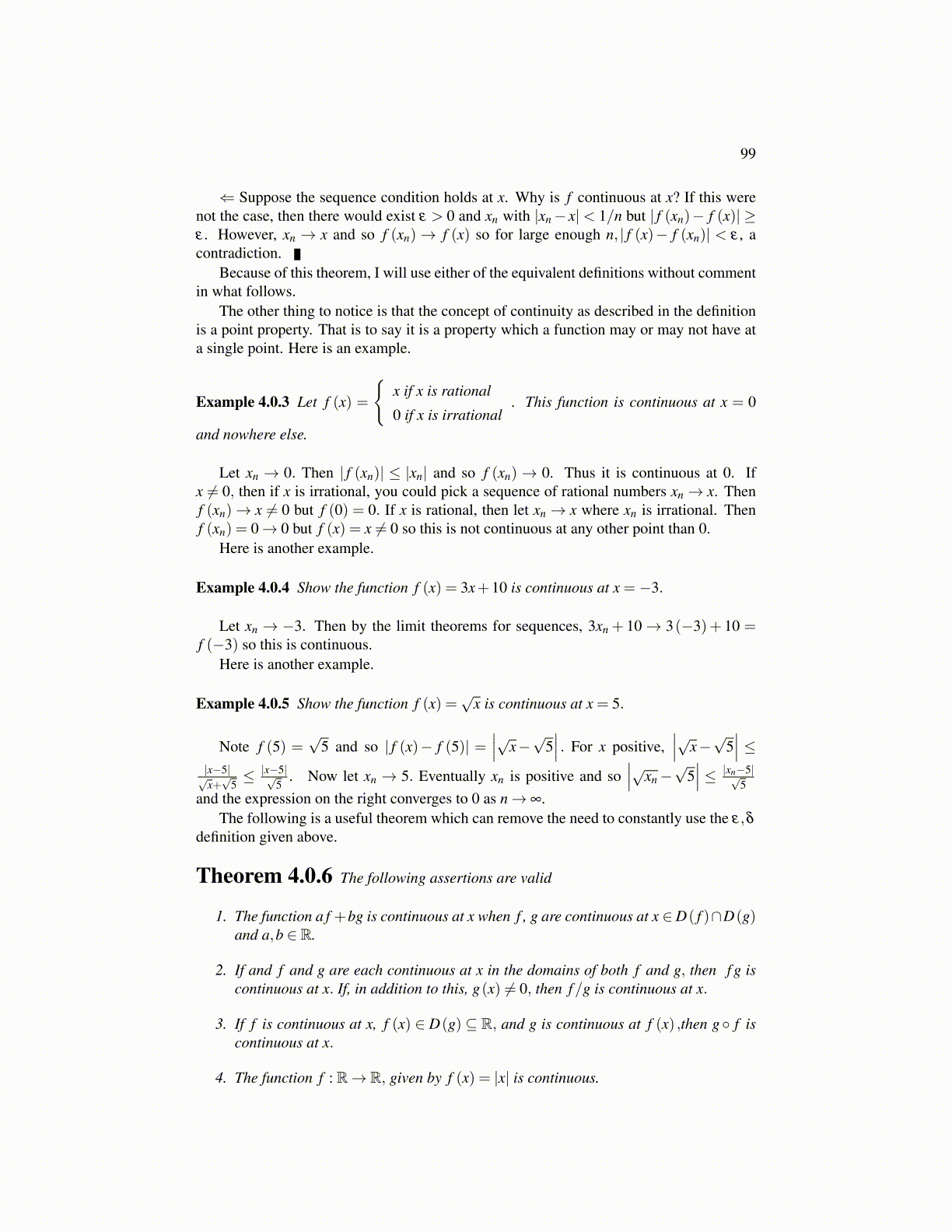
99
⇐ Suppose the sequence condition holds at x. Why is f continuous at x? If this werenot the case, then there would exist ε > 0 and xn with |xn − x|< 1/n but | f (xn)− f (x)| ≥ε . However, xn → x and so f (xn) → f (x) so for large enough n, | f (x)− f (xn)| < ε , acontradiction.
Because of this theorem, I will use either of the equivalent definitions without commentin what follows.
The other thing to notice is that the concept of continuity as described in the definitionis a point property. That is to say it is a property which a function may or may not have ata single point. Here is an example.
Example 4.0.3 Let f (x) =
{x if x is rational
0 if x is irrational. This function is continuous at x = 0
and nowhere else.
Let xn → 0. Then | f (xn)| ≤ |xn| and so f (xn) → 0. Thus it is continuous at 0. Ifx ̸= 0, then if x is irrational, you could pick a sequence of rational numbers xn → x. Thenf (xn)→ x ̸= 0 but f (0) = 0. If x is rational, then let xn → x where xn is irrational. Thenf (xn) = 0 → 0 but f (x) = x ̸= 0 so this is not continuous at any other point than 0.
Here is another example.
Example 4.0.4 Show the function f (x) = 3x+10 is continuous at x = −3.
Let xn → −3. Then by the limit theorems for sequences, 3xn + 10 → 3(−3)+ 10 =f (−3) so this is continuous.
Here is another example.
Example 4.0.5 Show the function f (x) =√
x is continuous at x = 5.
Note f (5) =√
5 and so | f (x)− f (5)| =∣∣∣√x−
√5∣∣∣ . For x positive,
∣∣∣√x−√
5∣∣∣ ≤
|x−5|√x+
√5≤ |x−5|√
5. Now let xn → 5. Eventually xn is positive and so
∣∣∣√xn −√
5∣∣∣ ≤ |xn−5|√
5and the expression on the right converges to 0 as n → ∞.
The following is a useful theorem which can remove the need to constantly use the ε,δdefinition given above.
Theorem 4.0.6 The following assertions are valid
1. The function a f +bg is continuous at x when f , g are continuous at x ∈ D( f )∩D(g)and a,b ∈ R.
2. If and f and g are each continuous at x in the domains of both f and g, then f g iscontinuous at x. If, in addition to this, g(x) ̸= 0, then f/g is continuous at x.
3. If f is continuous at x, f (x) ∈ D(g) ⊆ R, and g is continuous at f (x) ,then g ◦ f iscontinuous at x.
4. The function f : R→ R, given by f (x) = |x| is continuous.